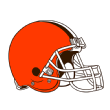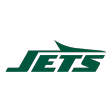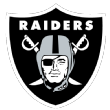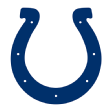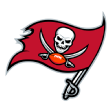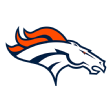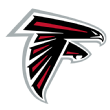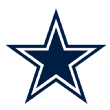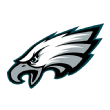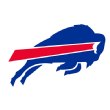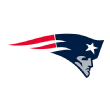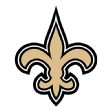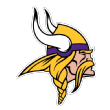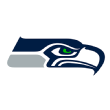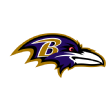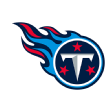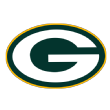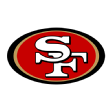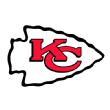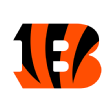
1. Cincinnati Bengals
Joe Burrow, QB, LSU
Did you expect anything else here? The Bengals need a quarterback, and the Heisman Trophy-winning Burrow, coming off one of the greatest seasons in college football history, is the clear No. 1 quarterback in this class. Remember that the 2-14 Bengals can release former starter Andy Dalton with no dead-cap charge, so this can be a clean slate with Burrow -- who went to high school in Athens, Ohio -- taking over (and 2019 fourth-round pick Ryan Finley serving as backup). One more thing to remember: Cincinnati got zero snaps from last year's first-round pick Jonah Williams, so he'll help Burrow immediately. Now the Bengals have to get Burrow some weapons, starting with keeping free-agent receiver A.J. Green.

2. Washington Redskins
Chase Young, DE, Ohio State
If you scanned Washington's depth chart, you probably wouldn't pick out an edge rusher as its top need. It might not even be in the top three. And yet, the Redskins absolutely can't pass on Young -- unless they get bowled over with an offer from a team trading up. With 16.5 sacks in 2019, Young was truly dominant, and he'll make an instant impact at the next level. Yes, Washington has veteran Ryan Kerrigan, who has one year left on his contract, and just took Montez Sweat (seven sacks as a rookie) in the first round, but Young has All-Pro talent and is my top-ranked prospect overall. New coach Ron Rivera will love him.
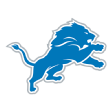
3. Detroit Lions
Jeff Okudah, CB, Ohio State
This pick has to be on defense, right? After the Lions spent a boatload of money in free agency last year on pass-rusher Trey Flowers and corner Justin Coleman, I thought they might take a step up. That didn't happen in a disappointing season, as Matt Patricia's defense gave up the NFL's most passing yards per game (284.4) and had the second-fewest sacks (28). Combine that with a half-season from Matthew Stafford and you get 3-12-1, and now Patricia is facing a make-or-break Year 3 in Detroit. Okudah, the top corner in this class, reminds me a little bit of Stephon Gilmore, whom Patricia coached for a season in New England. The Buckeye is also a stellar tackler off the edge. With Young off the board, Okudah is the top defender available.

4. New York Giants
Isaiah Simmons, OLB, Clemson
An off-ball linebacker in the top five? Believe it -- Simmons is that good. He is the perfect run-and-cover linebacker for today's NFL, and he can do anything and play every down. Just look at his incredible stat line from 2019: 104 tackles, eight sacks, three interceptions and 16 total tackles for loss. The Giants have many needs, but Simmons is the type of defender who makes everyone around him better. This is another spot to watch for a rising pass-rusher, but I don't have another one graded this high. I also thought about offensive line; New York could upgrade at both tackle spots. By the way: The last time the Giants picked No. 4 overall, they ended up with a pretty good player (good luck in retirement, Eli).
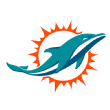
5. Miami Dolphins
Tua Tagovailoa, QB, Alabama
Let's rewind: Back in 2006, the Nick Saban-coached Dolphins passed on signing a quarterback coming off a serious injury and instead traded draft picks to acquire Daunte Culpepper and Joey Harrington. Things didn't work out, and Saban moved on to Alabama the next year. The quarterback Saban and Miami could have had? Drew Brees. Now, Saban has a talented quarterback with injury questions, and things have come full circle. The Dolphins shouldn't pass on this one. Tagovailoa, who still needs to pass medical checks on his injured hip, is a super-talented passer with elite accuracy. With three first-round picks and two second-rounders, Miami has to build its talent base, and it can start with a franchise quarterback.
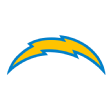
6. Los Angeles Chargers
Justin Herbert, QB, Oregon
The Chargers have some big decisions to make over the next few months. Will they bring back free-agent quarterback Philip Rivers? Will they pay up to keep tight end Hunter Henry and running back Melvin Gordon? Rivers showed some decline in 2019, throwing 20 interceptions. It could be time to start fresh with the 6-foot-6 Herbert, who has the highest ceiling of any of the quarterbacks in this class. His inconsistency can be maddening and his decision-making must improve, but you can't doubt his talent, and a team in the top 10 could fall in love. L.A. has some issues; its defense produced just 30 sacks (despite Joey Bosa and Melvin Ingram III combining for 18.5), and quarterbacks completed 70.7% of passes against it, highest in the league. The Chargers also got almost nothing from top 2019 picks Jerry Tillery and Nasir Adderley. This also could be a spot to watch for defense.
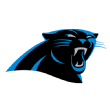
7. Carolina Panthers
Derrick Brown, DT, Auburn
I see this pick going toward the trenches, either on defense or offense. Carolina ranked second in the NFL with 53 sacks this season, but 29 of those came from pending free agents in Gerald McCoy (five), Mario Addison (9.5), Bruce Irvin (8.5) and Vernon Butler (six). New coach Matt Rhule needs to find replacements -- not all of them will be back. Worse news for the Panthers? The offensive line allowed 58 sacks, tied for most in the league. They can upgrade across the board there. I'll go with Brown, who has explosive athleticism in a massive 6-foot-5 frame. He improved as a pass-rusher this season, even if he didn't stuff the stat sheet (four sacks). He can be the Panthers' defensive anchor and make the linebackers and secondary behind him better, just by eating up blockers and chasing down quarterbacks.
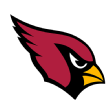
8. Arizona Cardinals
Andrew Thomas, OT, Georgia
This is about the range in which we could see a run on offensive tackles, and Thomas, who has played on both the left and right, is No. 1 on my board. I debated going with a receiver here; wouldn't Kyler Murray's former teammate CeeDee Lamb enjoy catching a few more long touchdown passes from his friend? But this comes down to protecting the franchise quarterback, and Arizona desperately needs help along its line, particularly at left tackle, where starter D.J. Humphries is a free agent. The Cardinals also have some defensive deficiencies, so keep an eye on a defensive back too.
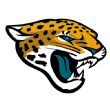
9. Jacksonville Jaguars
Javon Kinlaw, DT, South Carolina
Kinlaw is just behind Brown in my defensive tackle rankings, and he has had a good week of practice at the Senior Bowl, cementing his status as a top-15 pick. He fills a void in Jacksonville, where former first-round pick Taven Bryan (three sacks in two seasons) hasn't worked out. The Jags hit on edge rusher Josh Allen (10.5 sacks) in last year's draft, going with the best player available in the top 10, but they'll have to pay up to keep Yannick Ngakoue from hitting the free-agent market. This defense has to get an injection of youth, and the Jaguars have two first-round picks to do it.
